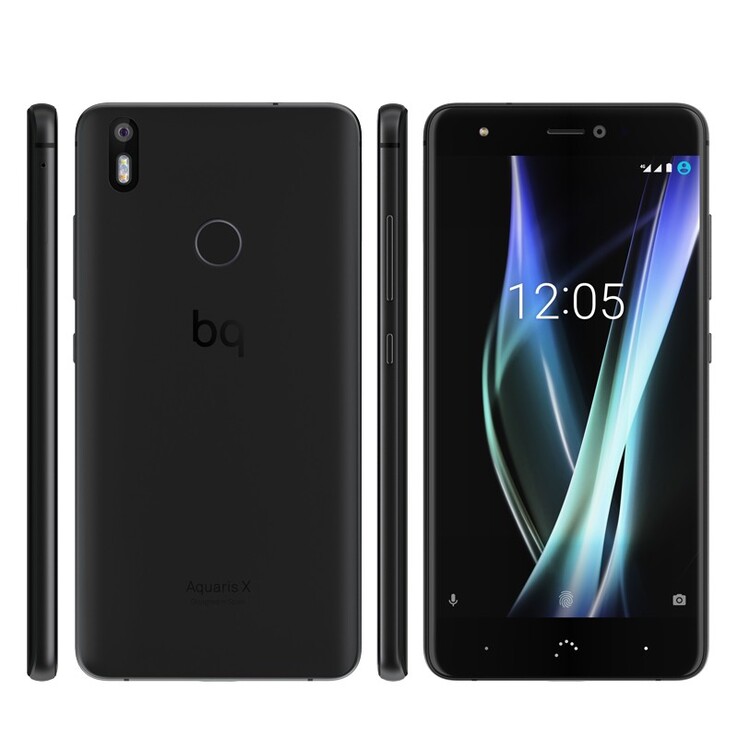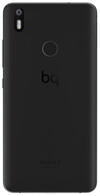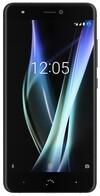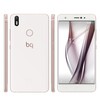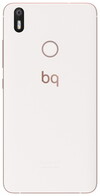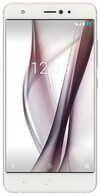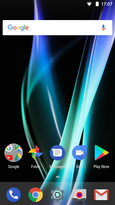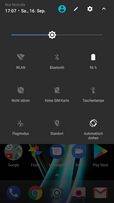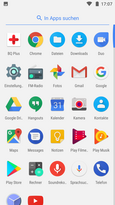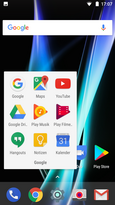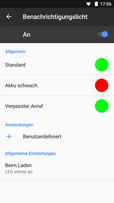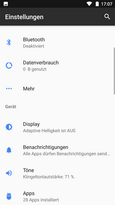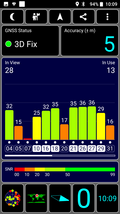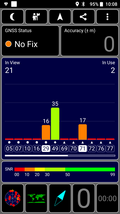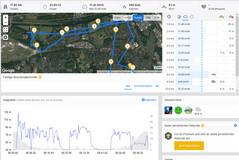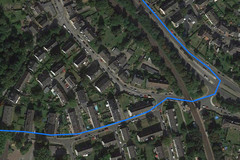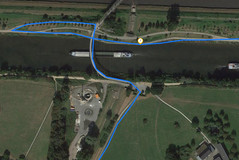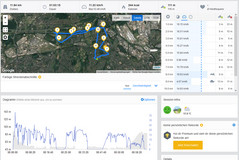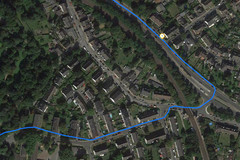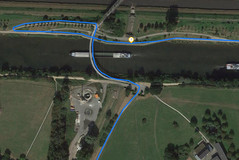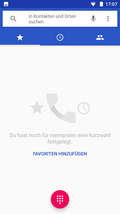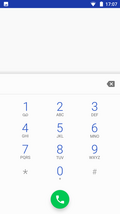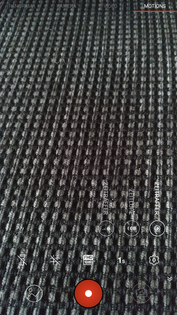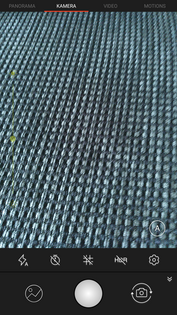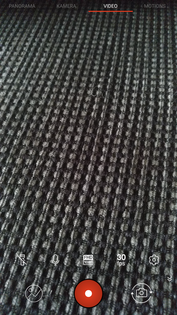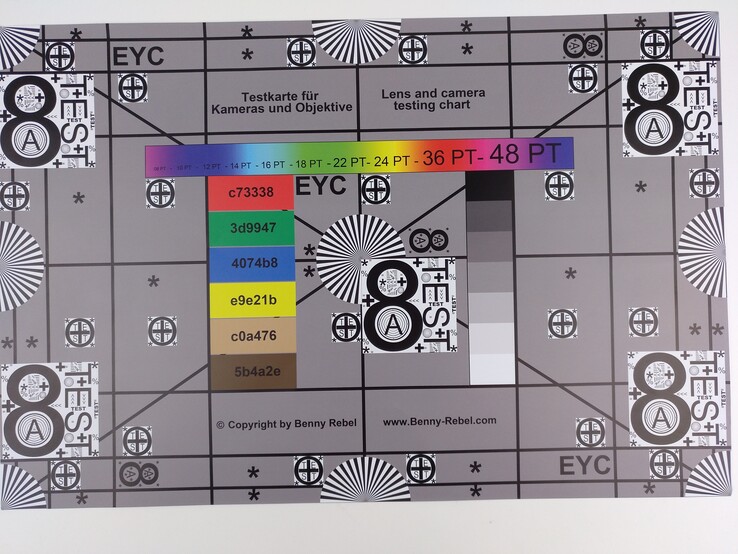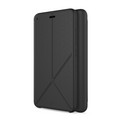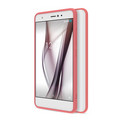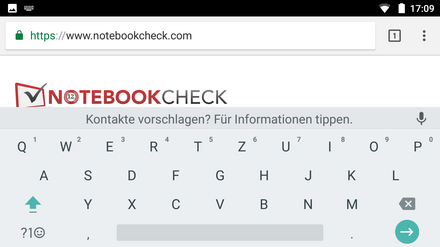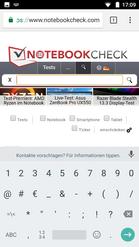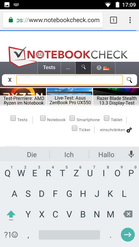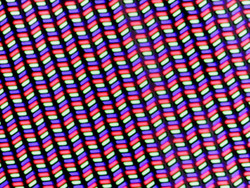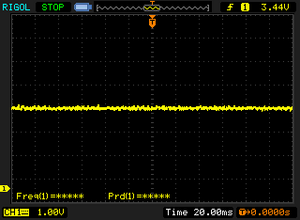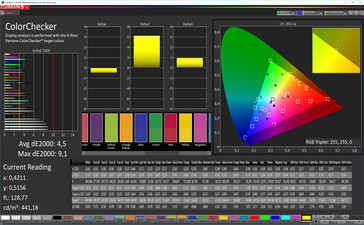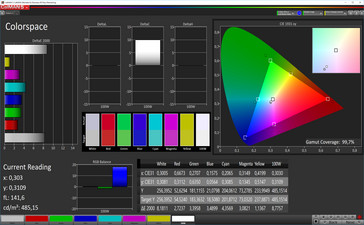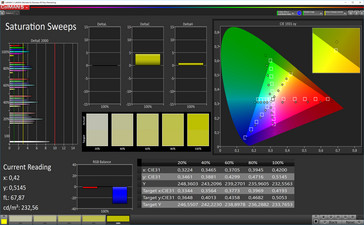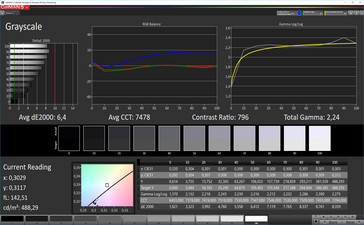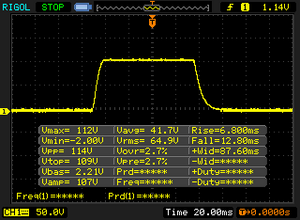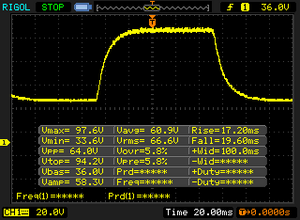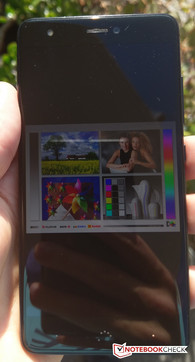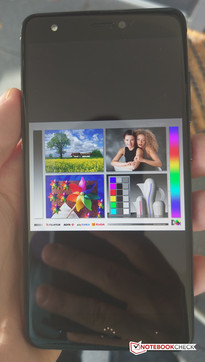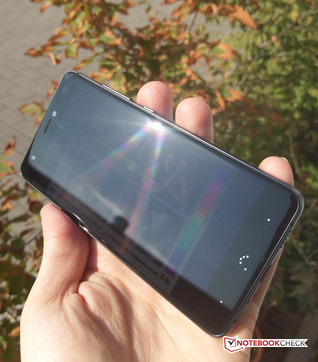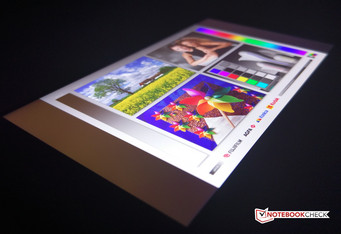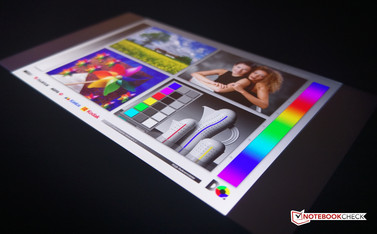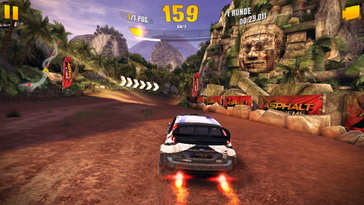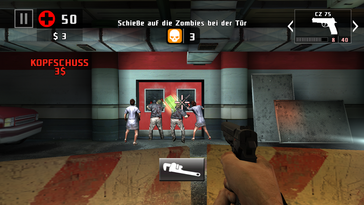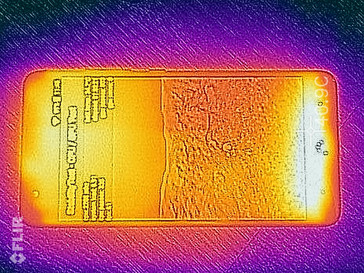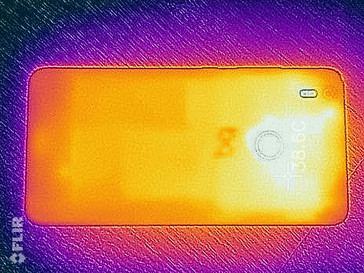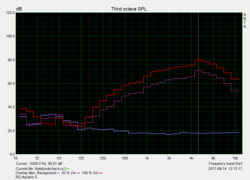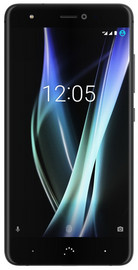BQ Aquaris X Smartphone Review
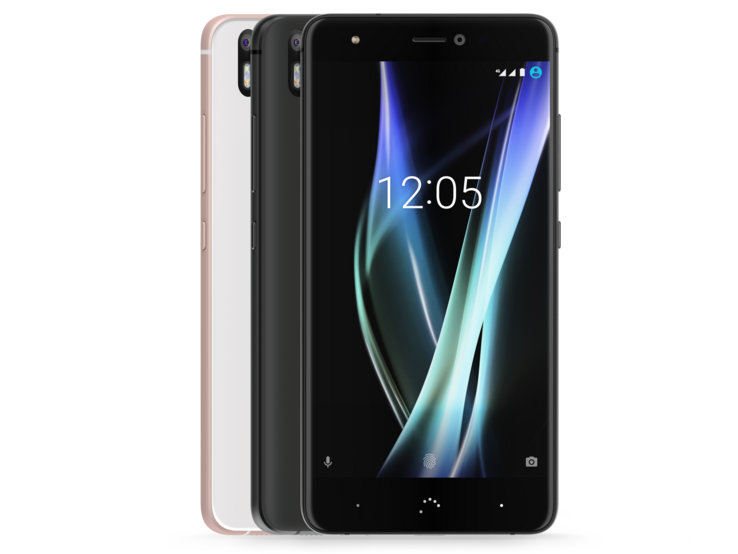
For the original German review, click here.
With its X series, the smartphone label BQ, that has its headquarters in Las Rozas de Madrid, Spain, has aimed to revolutionize the concept of photography in the mid-range smartphone segment. Not too long ago, the Pro version of the BQ Aquaris X scored quite good results in our test run - both in general performance and for its camera quality. As there are not many technical differences between the two models our expectations were quite high for the 100€ (~$117) cheaper mid-range model with a recommended retail price of 300€ (~$352). The manufacturer only cites prices in Euros on its website, but offers international shipment, including to the US and UK.
Apart from a Qualcomm octa-core processor, 3 GB of RAM and a 16-MP camera with Sony EXMOR sensor, the Aquaris X is equipped with a 5.3-inch IPS panel, a fingerprint sensor as well as 32 GB of storage. Storage can also be expanded via an SD card - or if not, the slot can also be used for a second SIM card.
Possible competitors of the mid-range smartphone that we have chosen to be our comparison devices for this review are the Lenovo Moto Z Play, the Nokia 6, the Samsung Galaxy A5 (2017), the Motorola Moto G5 as well as the Huawei P10 Lite. Due to the low difference in price between the two BQ smartphones, we have also decided to compare the Aquaris X to its sister version, the BQ Aquaris X Pro.
Case
The case of the BQ Aquaris X has the IP 52 standard, which means it is dust and dripping water protected. It is available in Mineral Black and Pearl Rose (white) and is quite compact at 146.5 x 72.7 mm (~57.6 x 2.8 in). The low weight of 153 grams (~5.4 oz) and its thickness of 7.9 mm (~0.3 in) mean it is very comfortable to hold.
The 5.2-inch display is slightly curved (2.5 D). The bezels at the side are narrow; the top and bottom bezels rather wide in comparison, which is reflected in the display-to-surface ratio of 70%.
Considering this is a mid-range device, we were not quite sure what to think of the choice of materials for the BQ Aquaris X. The buttons for volume control and power-on are firmly set into the case and have clear pressure points. The workmanship and stability of the case are also good. But unlike its sister model, the Aquaris X only has a plastic back cover, which is not quite the quality we would have hoped for from a mid-range device.
Connectivity
The built-in eMMC storage is 32 GB large and offers about 24.2 GB for free use after the device is first set-up. Storage can be expanded to up to 256 GB via the SD card, which can also be formatted to act as internal storage.
The USB Type-C port with USB 2.0 is positioned at the bottom of the device and does not only charge the smartphone and support data transfer to the computer, it also supports OTG (On-The-Go). This means that peripheral devices can be connected to the smartphone via an OTG adapter.
The smartphone also has an ambient display, a fingerprint sensor that unlocks the screen, an LED that indicates notifications as well as the classic 3.5-inch audio jack. Wireless transfer of display content is also supported and worked very well in our test with a Sony Android TV.
Software
BQ has decided to equip its mid-range smartphone with Android Version 7.1 Nougat, but it has already been announced that the operating system will receive an update to the new Android 8.0 Oreo. The manufacturer has also promised to supply the Aquaris X with Android Security Patches every two months for two years after product launch (June 2017). At the time of testing, our device had a Security Patch dating from August 2017.
The interface is almost entirely standard Vanilla Android, which optically has hardly any differences to the Google User Interface. The Spanish manufacturer has also kept the pre-installed apps to a minimum - there is no bloatware on the Aquaris X.
Communication & GPS
BQ has equipped the Aquaris X with two Nano SIM slots, one of which can also optionally be used as a microSD card slot. The smartphone connects to mobile internet via LTE cat. 6, which theoretically has a maximum download rate of 300 MBit/s and an upload rate of 50 MBit/s.
Bluetooth 4.2 and Near-Field Communication (NFC) take care of wireless communication to other mobile devices.
The Wi-Fi module of the Aquaris X supports the IEEE 802.11 standards a/b/g/n/ac and works both on the 2.4 and 5.0 GHz band. It has a satisfying range - in immediate proximity to the router (Telekom Speedport, W921V) the damping factor is low at -35 dBm. The mid-range device had significantly higher speeds than the comparison devices in our Wi-Fi test - and was also faster than the Aquaris X Pro, which came as a bit of a surprise to us. Our measurements with the reference router Linksys EA8500 showed very good transfer rates both when sending and receiving data.
The BQ Aquaris X uses the GPS, Galileo and Glonass satellite networks for positioning. This works very quickly outdoors and the phone positioned us within 5 meters. The mid-range device could not locate us indoors, however.
We also measured accuracy by taking the phone on a 12-km (~7.5 miles) bicycle ride and compared the results to those of the professional navigation system Garmin Edge 500. At the end of the tour, there were only 10 meters (~10.9 yds) difference between the BQ smartphone and the Garmin Edge 500. This is a great value that even most high-end smartphones cannot reach. We noticed no faults when looking at the details of the recorded route. The Aquaris X is definitely very suitable for navigating both in the car and on the bike.
Telephone & Voice Quality
Cameras
BQ has chosen the same back camera for this device as LG has for the G5. It has an aperture of f/2.0. The Sony CMOS sensor (IMX 298) has a resolution of 16 MP and can be supported by a Dual Tone flash in bad lighting conditions. The 5312 x 2988 pixels mean the images are high in detail.
Photographs made with the Aquaris X have good color reproduction and a good white balance. In bright lighting, pictures are sharp and have high contrast with hardly any image noise. The dynamics of the photographs could be a little higher, though.
The 16-MP camera reaches its limits in dark or very varying lighting conditions (shade/sun). In dark conditions, there is noticeable image noise and the pictures are less sharp. The lens simply does not take in sufficient light for good low-light performance and the pixels of the EXMOR image sensor are too small (1.12 µm) with no option for optical image stabilization (OIS).
The front camera also has a CMOS image sensor (Samsung S5K4H8YX) with an aperture of f/2.0, again supported by an LED flash. Pictures can be taken with a resolution of 8 MP, which is fine for a mid-range smartphone.
The Aquaris X records videos at a maximum resolution of 4K with 30 fps or in 1080p at 60 fps. It also supports 120 fps slow-motion recording in 720p. If you use the front camera, the quality is reduced to 1080p at 60 fps, but the quality is a lot better at 30 fps in Full HD.
Accessories and Warranty
The device comes with a modular power supply that has a rated output of 18 watts (2 A, 9 V) as well as a USB cable.
BQ also offers various covers and screen protectors.
The warranty period is 24 months. Please see our Guarantees, Return Policies & Warranties FAQ for country-specific information.
Input Devices & Handling
The capacitive multi-touch screen of the Aquaris X was nice to handle during our test. It responded precisely and smoothly, supporting inputs with up to 10 fingers simultaneously. The fingerprint-resistant glass surface feels nice and enables smooth gliding.
You can choose between using the capacitive keys below the display or the usual Android on-screen keys for navigation. The capacitive keys do not have backlighting.
The active fingerprint sensor on the back of the Aquaris X works quickly, although it takes a while for the screen to turn on after the biometric identification via fingerprint. It usually recognizes the fingerprint immediately, but occasionally you will have to reposition your finger on the sensor for it to work.
Display
The LC-based panel is equipped with LTPS (Low Temperature Poly Silicon) technology. The 5.2-inch screen has a resolution of 1080p and a pixel density of 424 ppi, which means that content can be displayed sharply.
We measured luminance with the X-Rite i1Pro2 and the maximum brightness was 737 cd/m². The brightness distribution of the Aquaris X is very uniform at 91%. We measured almost no deviation in the practical APL50 test (Average Picture Level) with a maximum of 680 cd/m². With the adaptive ambient light sensor turned off, the IPS panel had a brightness of 486 cd/m².
| |||||||||||||||||||||||||
Brightness Distribution: 91 %
Center on Battery: 675 cd/m²
Contrast: 1144:1 (Black: 0.59 cd/m²)
ΔE ColorChecker Calman: 4.5 | ∀{0.5-29.43 Ø4.78}
ΔE Greyscale Calman: 6.4 | ∀{0.09-98 Ø5}
Gamma: 2.24
CCT: 7478 K
| BQ Aquaris X LTPS IPS , 1920x1080, 5.2" | BQ Aquaris X Pro IPS, 1920x1080, 5.2" | Nokia 6 IPS, 1920x1080, 5.5" | Lenovo Moto G5 IPS, 1920x1080, 5" | Samsung Galaxy A5 2017 Super AMOLED, 1920x1080, 5.2" | Lenovo Moto Z Play AMOLED, 1920x1080, 5.5" | Huawei P10 Lite IPS, 1920x1080, 5.2" | HTC U11 Super LCD5, 2560x1440, 5.5" | |
|---|---|---|---|---|---|---|---|---|
| Screen | -32% | -8% | 21% | 29% | 18% | 1% | 18% | |
| Brightness middle (cd/m²) | 675 | 458 -32% | 512 -24% | 660 -2% | 539 -20% | 509 -25% | 507 -25% | 482 -29% |
| Brightness (cd/m²) | 702 | 473 -33% | 501 -29% | 625 -11% | 542 -23% | 511 -27% | 509 -27% | 472 -33% |
| Brightness Distribution (%) | 91 | 88 -3% | 94 3% | 92 1% | 93 2% | 93 2% | 95 4% | 90 -1% |
| Black Level * (cd/m²) | 0.59 | 0.51 14% | 0.36 39% | 0.29 51% | 0.36 39% | 0.33 44% | ||
| Contrast (:1) | 1144 | 898 -22% | 1422 24% | 2276 99% | 1408 23% | 1461 28% | ||
| Colorchecker dE 2000 * | 4.5 | 7.1 -58% | 6.4 -42% | 4.9 -9% | 1.6 64% | 2.2 51% | 5.1 -13% | 3.2 29% |
| Colorchecker dE 2000 max. * | 9.1 | 14.5 -59% | 10.9 -20% | 7.6 16% | 2.6 71% | 5.8 36% | 9 1% | 5.4 41% |
| Greyscale dE 2000 * | 6.4 | 10.5 -64% | 7.2 -13% | 4.8 25% | 1.5 77% | 2 69% | 6.1 5% | 2.2 66% |
| Gamma | 2.24 98% | 2.28 96% | 2.28 96% | 2.18 101% | 2.28 96% | 2.25 98% | 2.28 96% | 2.22 99% |
| CCT | 7478 87% | 8951 73% | 7904 82% | 7357 88% | 6422 101% | 6768 96% | 8143 80% | 6581 99% |
* ... smaller is better
Screen Flickering / PWM (Pulse-Width Modulation)
| Screen flickering / PWM not detected | |||
In comparison: 53 % of all tested devices do not use PWM to dim the display. If PWM was detected, an average of 8095 (minimum: 5 - maximum: 343500) Hz was measured. | |||
Both the contrast ratio (1149:1) and the black value (0.59 cd/m²) are merely average for an IPS panel, but still good. The realistic APL50 test (Average Picture Level) measured the same black value with evenly distributed light and dark surfaces.
We did measure Delta E deviations in mixed colors and gray scales, but the values are still acceptable for a mid-range device. The gamma value is slightly elevated at 2.24 (ideal value: 2.2).
The color temperature (7500 K) is significantly below the ideal value (6500 K), which makes colors appear cooler than they should. The color cast is noticeable in the gray scales, but is not bothersome during everyday use.
Display Response Times
| ↔ Response Time Black to White | ||
|---|---|---|
| 19.6 ms ... rise ↗ and fall ↘ combined | ↗ 6.8 ms rise | |
| ↘ 12.8 ms fall | ||
| The screen shows good response rates in our tests, but may be too slow for competitive gamers. In comparison, all tested devices range from 0.1 (minimum) to 240 (maximum) ms. » 42 % of all devices are better. This means that the measured response time is similar to the average of all tested devices (20.2 ms). | ||
| ↔ Response Time 50% Grey to 80% Grey | ||
| 36.8 ms ... rise ↗ and fall ↘ combined | ↗ 17.2 ms rise | |
| ↘ 19.6 ms fall | ||
| The screen shows slow response rates in our tests and will be unsatisfactory for gamers. In comparison, all tested devices range from 0.165 (minimum) to 636 (maximum) ms. » 52 % of all devices are better. This means that the measured response time is worse than the average of all tested devices (31.6 ms). | ||
Performance
The Qualcomm Snapdragon 626 in the BQ smartphone is a mid-range SoC with eight processor cores of the ARM Cortex A53 architecture. The integrated Adreno 506 graphics unit also belongs to the middle range and offers support for modern APIs such as Vulkan or OpenGL ES 3.1.
The system performance of the Aquaris X is very good thanks to the slim UI. However, there is some juddering and occasional lagging during everyday multitasking. As you can see from the benchmark results, the Snapdragon 626, combined with 3 GB of RAM, offers competitive performance which is a little better than that of the comparison devices. But the ARM Mali-T830 MP3 in the Samsung Galaxy A5 (2017) does a little better at graphics-heavy computing.
| AnTuTu v6 - Total Score (sort by value) | |
| BQ Aquaris X | |
| BQ Aquaris X Pro | |
| Nokia 6 | |
| Lenovo Moto G5 | |
| Samsung Galaxy A5 2017 | |
| Lenovo Moto Z Play | |
| Huawei P10 Lite | |
| HTC U11 | |
| PCMark for Android | |
| Work performance score (sort by value) | |
| BQ Aquaris X | |
| BQ Aquaris X Pro | |
| Nokia 6 | |
| Lenovo Moto G5 | |
| Samsung Galaxy A5 2017 | |
| Lenovo Moto Z Play | |
| Huawei P10 Lite | |
| HTC U11 | |
| Work 2.0 performance score (sort by value) | |
| BQ Aquaris X | |
| BQ Aquaris X Pro | |
| Nokia 6 | |
| Lenovo Moto G5 | |
| Samsung Galaxy A5 2017 | |
| Huawei P10 Lite | |
| HTC U11 | |
| Geekbench 4.4 | |
| 64 Bit Single-Core Score (sort by value) | |
| BQ Aquaris X | |
| BQ Aquaris X Pro | |
| Nokia 6 | |
| Lenovo Moto G5 | |
| Samsung Galaxy A5 2017 | |
| Huawei P10 Lite | |
| HTC U11 | |
| 64 Bit Multi-Core Score (sort by value) | |
| BQ Aquaris X | |
| BQ Aquaris X Pro | |
| Nokia 6 | |
| Lenovo Moto G5 | |
| Samsung Galaxy A5 2017 | |
| Huawei P10 Lite | |
| HTC U11 | |
| GFXBench (DX / GLBenchmark) 2.7 | |
| T-Rex Onscreen (sort by value) | |
| BQ Aquaris X | |
| BQ Aquaris X Pro | |
| Nokia 6 | |
| Lenovo Moto G5 | |
| Samsung Galaxy A5 2017 | |
| Lenovo Moto Z Play | |
| Huawei P10 Lite | |
| HTC U11 | |
| 1920x1080 T-Rex Offscreen (sort by value) | |
| BQ Aquaris X | |
| BQ Aquaris X Pro | |
| Nokia 6 | |
| Lenovo Moto G5 | |
| Samsung Galaxy A5 2017 | |
| Lenovo Moto Z Play | |
| Huawei P10 Lite | |
| HTC U11 | |
| GFXBench 3.0 | |
| on screen Manhattan Onscreen OGL (sort by value) | |
| BQ Aquaris X | |
| BQ Aquaris X Pro | |
| Nokia 6 | |
| Lenovo Moto G5 | |
| Samsung Galaxy A5 2017 | |
| Lenovo Moto Z Play | |
| Huawei P10 Lite | |
| HTC U11 | |
| 1920x1080 1080p Manhattan Offscreen (sort by value) | |
| BQ Aquaris X | |
| BQ Aquaris X Pro | |
| Nokia 6 | |
| Lenovo Moto G5 | |
| Samsung Galaxy A5 2017 | |
| Lenovo Moto Z Play | |
| Huawei P10 Lite | |
| HTC U11 | |
| GFXBench 3.1 | |
| on screen Manhattan ES 3.1 Onscreen (sort by value) | |
| BQ Aquaris X | |
| BQ Aquaris X Pro | |
| Nokia 6 | |
| Lenovo Moto G5 | |
| Samsung Galaxy A5 2017 | |
| Lenovo Moto Z Play | |
| Huawei P10 Lite | |
| HTC U11 | |
| 1920x1080 Manhattan ES 3.1 Offscreen (sort by value) | |
| BQ Aquaris X | |
| BQ Aquaris X Pro | |
| Nokia 6 | |
| Lenovo Moto G5 | |
| Samsung Galaxy A5 2017 | |
| Lenovo Moto Z Play | |
| Huawei P10 Lite | |
| HTC U11 | |
| GFXBench | |
| on screen Car Chase Onscreen (sort by value) | |
| BQ Aquaris X | |
| BQ Aquaris X Pro | |
| Nokia 6 | |
| Lenovo Moto G5 | |
| Samsung Galaxy A5 2017 | |
| Lenovo Moto Z Play | |
| Huawei P10 Lite | |
| HTC U11 | |
| 1920x1080 Car Chase Offscreen (sort by value) | |
| BQ Aquaris X | |
| BQ Aquaris X Pro | |
| Nokia 6 | |
| Lenovo Moto G5 | |
| Samsung Galaxy A5 2017 | |
| Lenovo Moto Z Play | |
| Huawei P10 Lite | |
| HTC U11 | |
The browser speed is also good. However, the Aquaris X cannot keep up with its competition this time: The Huawei P10 Lite, Lenovo Moto Z Play and Samsung Galaxy A5 2017 all beat our test unit.
| JetStream 1.1 - Total Score | |
| HTC U11 (Chrome 58) | |
| Samsung Galaxy A5 2017 (Samsung Browser (Chrome 44)) | |
| Lenovo Moto Z Play (Chrome 53) | |
| Huawei P10 Lite (Chrome 55.0.2883.91) | |
| BQ Aquaris X (Chrome Version 60) | |
| BQ Aquaris X Pro (Chrome 59.0.3071.125) | |
| Lenovo Moto G5 (Chrome 57) | |
| Nokia 6 (Chrome 59.0.3071.125) | |
| Octane V2 - Total Score | |
| HTC U11 (Chrome 58) | |
| Samsung Galaxy A5 2017 (Samsung Browser (Chrome 44)) | |
| Lenovo Moto Z Play (Chrome 53) | |
| BQ Aquaris X (Chrome Version 60) | |
| Huawei P10 Lite (Chrome 55.0.2883.91) | |
| BQ Aquaris X Pro (Chrome 59.0.3071.125) | |
| Nokia 6 (Chrome 59.0.3071.125) | |
| Lenovo Moto G5 (Chrome 57) | |
| Mozilla Kraken 1.1 - Total | |
| Nokia 6 (Chrome 59.0.3071.125) | |
| Lenovo Moto G5 (Chrome 57) | |
| BQ Aquaris X (Chrome Version 60) | |
| BQ Aquaris X Pro (Chrome 59.0.3071.125) | |
| Huawei P10 Lite (Chrome 55.0.2883.91) | |
| Lenovo Moto Z Play (Chrome 53) | |
| Samsung Galaxy A5 2017 (Samsung Browser (Chrome 44)) | |
| HTC U11 (Chrome 58) | |
* ... smaller is better
The speed of the flash storage is average for a mid-range smartphone. It can keep up with the eMMC competition in the AndroBench 5 test, but it comes nowhere near UFS access rates.
The integrated microSD card slot is good for this price range. We measured its transfer rates with our reference card, the Toshiba Exceria Pro M501 (max read rate: 270 MB/s, max write rate: 150 MB/s) and got comparatively good results: 84 MB/s (read), 63 MB/s (write).
| BQ Aquaris X | BQ Aquaris X Pro | Nokia 6 | Lenovo Moto G5 | Samsung Galaxy A5 2017 | Lenovo Moto Z Play | Huawei P10 Lite | HTC U11 | |
|---|---|---|---|---|---|---|---|---|
| AndroBench 3-5 | 11% | -3% | 26% | -15% | 42% | 24% | 170% | |
| Sequential Read 256KB (MB/s) | 266.4 | 270.5 2% | 273.1 3% | 230.6 -13% | 182 -32% | 254.8 -4% | 264.3 -1% | 717 169% |
| Sequential Write 256KB (MB/s) | 75.3 | 139.6 85% | 77.1 2% | 45.6 -39% | 77.1 2% | 73.1 -3% | 129.2 72% | 206.4 174% |
| Random Read 4KB (MB/s) | 37.47 | 37.97 1% | 33.8 -10% | 37.6 0% | 22.41 -40% | 38.78 3% | 72.5 93% | 91.4 144% |
| Random Write 4KB (MB/s) | 11.85 | 12.07 2% | 11.34 -4% | 37.9 220% | 12.13 2% | 45.58 285% | 19.36 63% | 80 575% |
| Sequential Read 256KB SDCard (MB/s) | 84.3 ? | 78.7 ? -7% | 84.6 0% | 78.5 ? -7% | 73.7 ? -13% | 74.6 ? -12% | 53.4 ? -37% | 68.8 ? -18% |
| Sequential Write 256KB SDCard (MB/s) | 62.6 ? | 49.77 ? -20% | 56.6 -10% | 58 ? -7% | 56 ? -11% | 50.6 ? -19% | 32.7 ? -48% | 46.25 ? -26% |
Games
The Adreno 506 graphics card integrated in the SoC clocks at up to 650 MHz. Current games from the Android PlayStore such as "Asphalt Xtreme" or "Dead Trigger" are no problem for the GPU. The graphics unit displayed the games at 30 fps and over, even with high details, in our test with the sister version Aquaris X Pro.
The touchscreen responded precisely during gameplay and the sensors worked well too.
Emissions
Temperature
(+) The maximum temperature on the upper side is 38.7 °C / 102 F, compared to the average of 35.2 °C / 95 F, ranging from 21.9 to 247 °C for the class Smartphone.
(+) The bottom heats up to a maximum of 36.3 °C / 97 F, compared to the average of 34 °C / 93 F
(±) In idle usage, the average temperature for the upper side is 33.7 °C / 93 F, compared to the device average of 32.9 °C / 91 F.
Speaker
The speaker of the Aquarius X is positioned at the bottom of the device. It produced a maximum volume of 86 dB(A) in our test and had decent sound quality. Even at full volume, the sound did not seem particularly distorted, but, as was to be expected, the highs were quite strong. The Pink Noise diagram shows that lower frequencies are hardly audible. Overall, the distribution of mids and highs is not very linear.
In order to get a good sound with more bass out of the phone, you will have to make use of the 3.5 mm audio jack. A headset is not included in the scope of delivery.
BQ Aquaris X audio analysis
(+) | speakers can play relatively loud (85.7 dB)
Bass 100 - 315 Hz
(-) | nearly no bass - on average 30.8% lower than median
(±) | linearity of bass is average (10.3% delta to prev. frequency)
Mids 400 - 2000 Hz
(±) | reduced mids - on average 5.7% lower than median
(+) | mids are linear (5.8% delta to prev. frequency)
Highs 2 - 16 kHz
(±) | higher highs - on average 9.5% higher than median
(+) | highs are linear (4.3% delta to prev. frequency)
Overall 100 - 16.000 Hz
(±) | linearity of overall sound is average (27.1% difference to median)
Compared to same class
» 70% of all tested devices in this class were better, 5% similar, 25% worse
» The best had a delta of 11%, average was 35%, worst was 134%
Compared to all devices tested
» 82% of all tested devices were better, 4% similar, 14% worse
» The best had a delta of 4%, average was 24%, worst was 134%
Samsung Galaxy A5 2017 audio analysis
(+) | speakers can play relatively loud (83 dB)
Bass 100 - 315 Hz
(-) | nearly no bass - on average 15.5% lower than median
(±) | linearity of bass is average (9.1% delta to prev. frequency)
Mids 400 - 2000 Hz
(±) | higher mids - on average 9.4% higher than median
(±) | linearity of mids is average (7.6% delta to prev. frequency)
Highs 2 - 16 kHz
(±) | higher highs - on average 5% higher than median
(±) | linearity of highs is average (7.6% delta to prev. frequency)
Overall 100 - 16.000 Hz
(±) | linearity of overall sound is average (23.6% difference to median)
Compared to same class
» 53% of all tested devices in this class were better, 8% similar, 39% worse
» The best had a delta of 11%, average was 35%, worst was 134%
Compared to all devices tested
» 70% of all tested devices were better, 6% similar, 24% worse
» The best had a delta of 4%, average was 24%, worst was 134%
BQ Aquaris X Pro audio analysis
(+) | speakers can play relatively loud (86.1 dB)
Bass 100 - 315 Hz
(-) | nearly no bass - on average 26.4% lower than median
(±) | linearity of bass is average (10% delta to prev. frequency)
Mids 400 - 2000 Hz
(+) | balanced mids - only 4.5% away from median
(+) | mids are linear (5.9% delta to prev. frequency)
Highs 2 - 16 kHz
(±) | higher highs - on average 11.1% higher than median
(+) | highs are linear (6.7% delta to prev. frequency)
Overall 100 - 16.000 Hz
(±) | linearity of overall sound is average (26% difference to median)
Compared to same class
» 65% of all tested devices in this class were better, 6% similar, 28% worse
» The best had a delta of 11%, average was 35%, worst was 134%
Compared to all devices tested
» 79% of all tested devices were better, 4% similar, 16% worse
» The best had a delta of 4%, average was 24%, worst was 134%
Frequency diagram in comparison (check boxes can be turned on/off!)
Battery Runtime
Power Consumption
The power consumption is very high while idling and the BQ smartphone also consumes significantly more power than most of its competitors under load.
| Off / Standby | |
| Idle | |
| Load |
|
Key:
min: | |
| BQ Aquaris X 3100 mAh | BQ Aquaris X Pro 3100 mAh | Nokia 6 3000 mAh | Lenovo Moto G5 2800 mAh | Samsung Galaxy A5 2017 3000 mAh | Lenovo Moto Z Play 3510 mAh | Huawei P10 Lite 3000 mAh | HTC U11 3000 mAh | |
|---|---|---|---|---|---|---|---|---|
| Power Consumption | 1% | 8% | 9% | 32% | 48% | 13% | -10% | |
| Idle Minimum * (Watt) | 1.12 | 0.67 40% | 0.63 44% | 0.73 35% | 0.64 43% | 0.51 54% | 0.38 66% | 0.73 35% |
| Idle Average * (Watt) | 2.16 | 1.7 21% | 1.75 19% | 1.64 24% | 1.36 37% | 0.87 60% | 1.87 13% | 1.96 9% |
| Idle Maximum * (Watt) | 2.18 | 1.78 18% | 1.87 14% | 1.68 23% | 1.4 36% | 0.9 59% | 1.92 12% | 1.98 9% |
| Load Average * (Watt) | 2.94 | 4.42 -50% | 3.56 -21% | 3.46 -18% | 2.53 14% | 1.69 43% | 3.82 -30% | 4.82 -64% |
| Load Maximum * (Watt) | 5.1 | 6.3 -24% | 5.85 -15% | 6.13 -20% | 3.63 29% | 4 22% | 4.9 4% | 7.15 -40% |
* ... smaller is better
Battery Runtime
The Aquaris X managed to run for 9 hours and 52 minutes during our realistic Wi-Fi test (display brightness set to 150 cd/m²), which is a good result, but just below average among our comparison devices.
Thanks to Quick Charge 3.0, the battery was fully recharged within about 2 hours.
| BQ Aquaris X 3100 mAh | BQ Aquaris X Pro 3100 mAh | Nokia 6 3000 mAh | Lenovo Moto G5 2800 mAh | Samsung Galaxy A5 2017 3000 mAh | Lenovo Moto Z Play 3510 mAh | Huawei P10 Lite 3000 mAh | HTC U11 3000 mAh | |
|---|---|---|---|---|---|---|---|---|
| Battery runtime | ||||||||
| WiFi v1.3 (h) | 9.9 | 12.2 23% | 11.2 13% | 9.4 -5% | 14.1 42% | 13.7 38% | 11.1 12% | 9.3 -6% |
Pros
Cons
Verdict
We were not able to find a lot of weaknesses in the BQ Aquaris X - rather the opposite: The Spanish mid-range smartphone offers an interesting profile of strong points and weaknesses for this price range. Even the Pro version - available for 100€ (~$117) more - cannot compete with our test unit in the areas of display brightness, color accuracy and color temperature. The lower transfer rates in our Wi-Fi test might have been fixed via a software update by now.
The mid-range Aquaris X is definitely not a bad choice for friends of Android Vanilla.
We really liked the very bright IPS display of the BQ Aquaris X, as well as the fast Wi-Fi module, the precise GPS positioning, good camera quality with numerous settings and the possibility to use two SIM cards simultaneously. In addition, the manufacturer has resisted making too many additions to the software and has not added any bloatware.
The quality of the plastic back cover could have been a little better and a device with a recommended retail price of 300€ (~$352) should have backlit navigation keys below the display.
BQ Aquaris X
- 09/27/2017 v6 (old)
Marcus Herbrich




